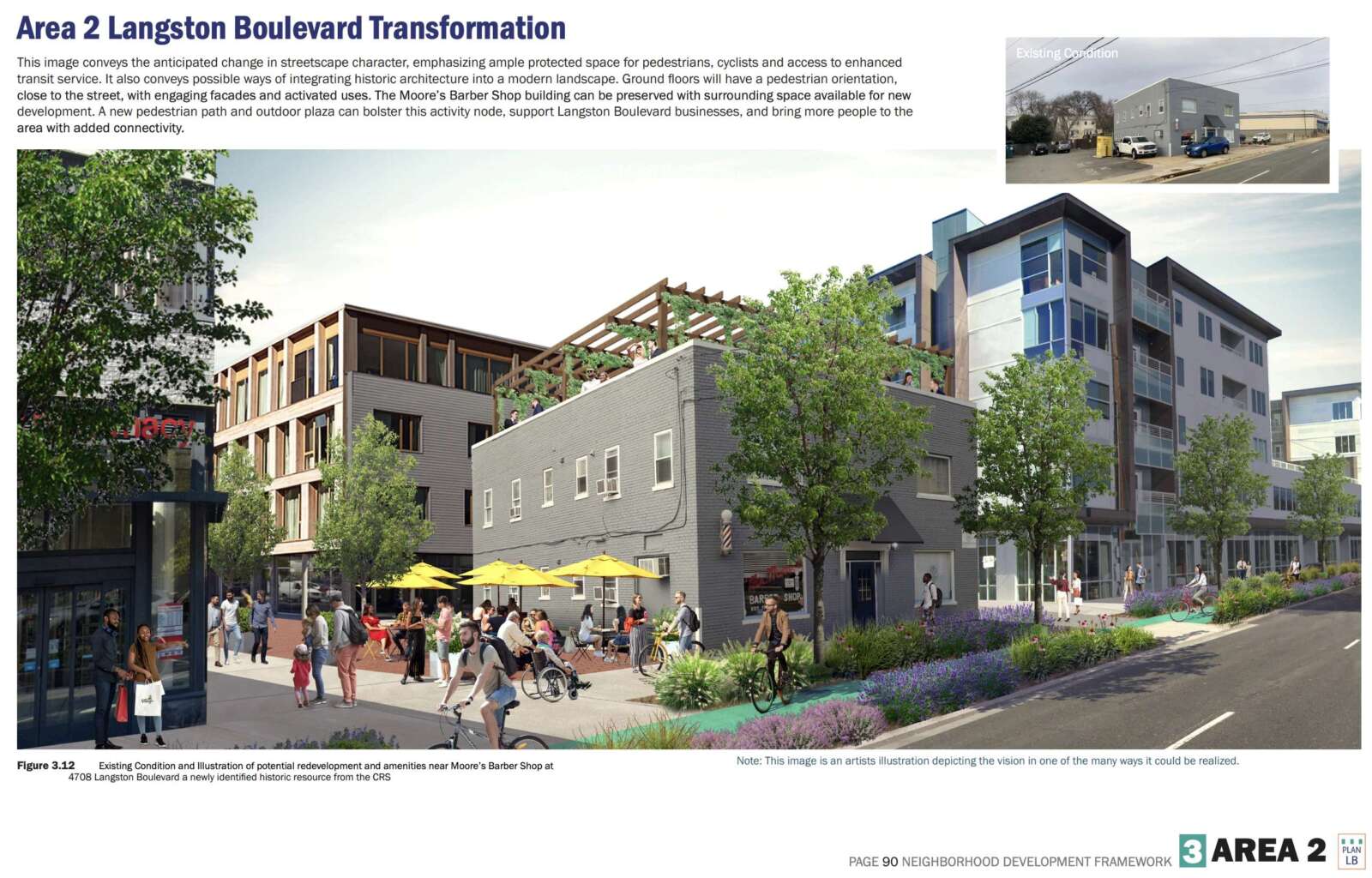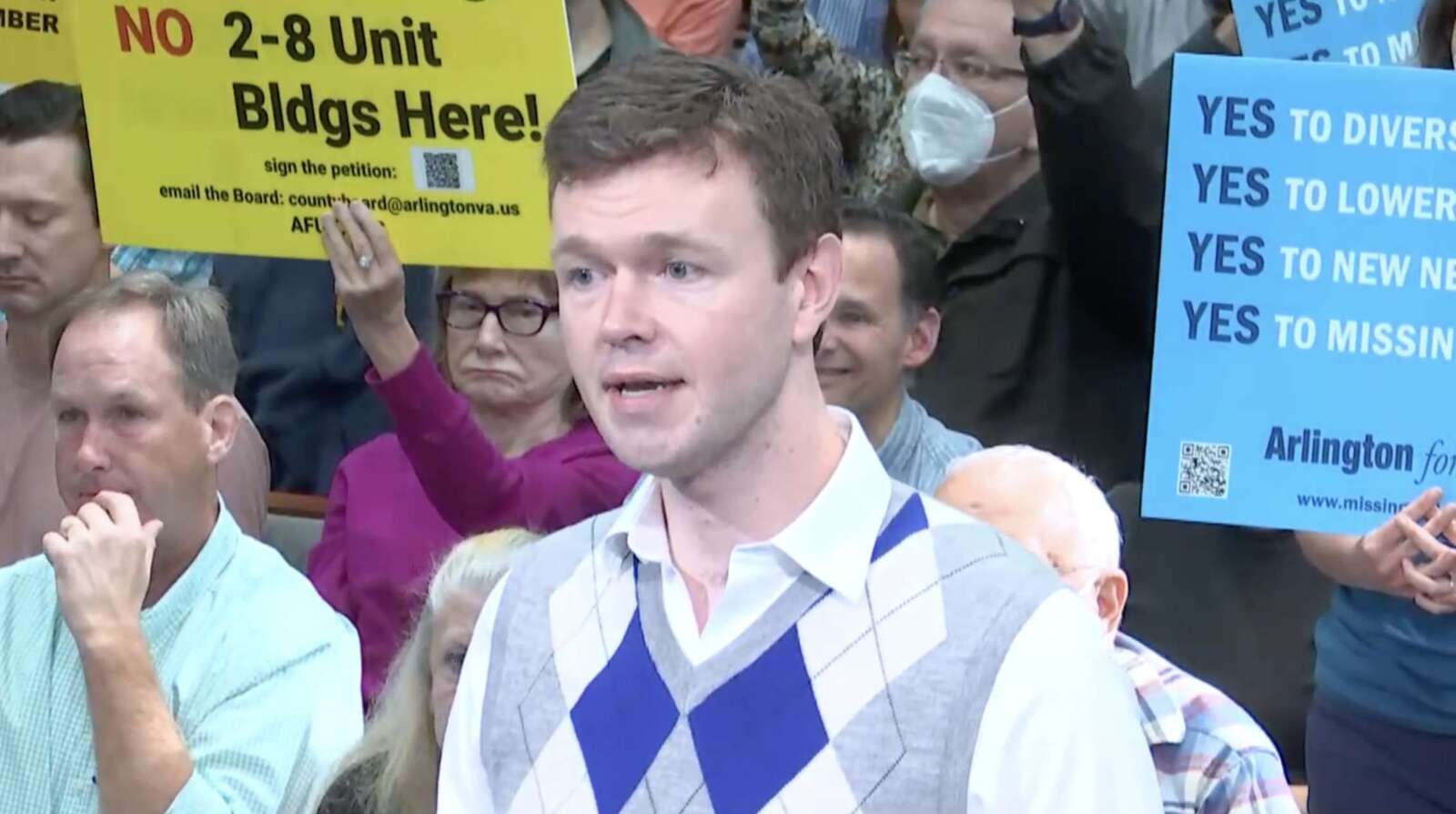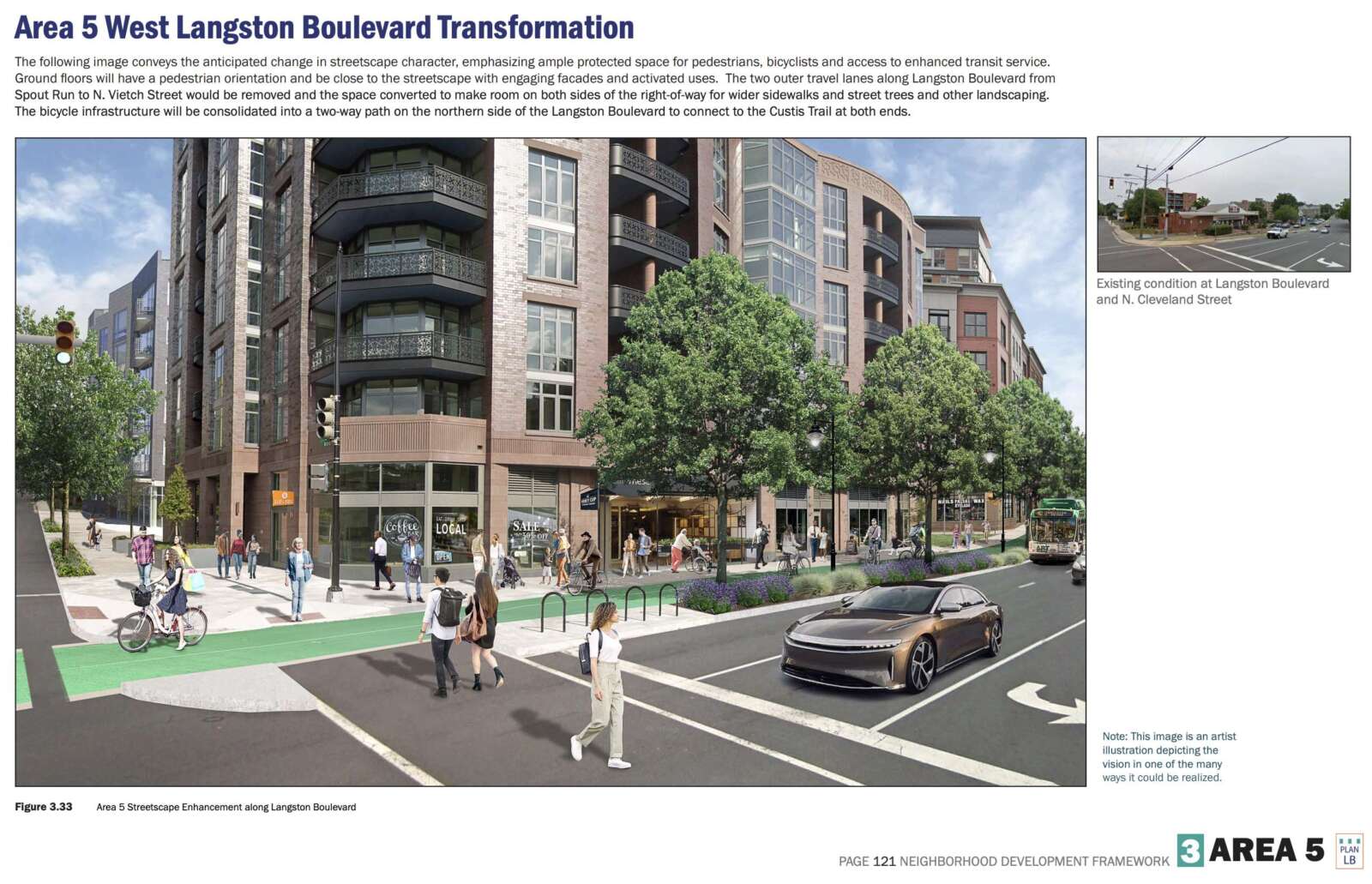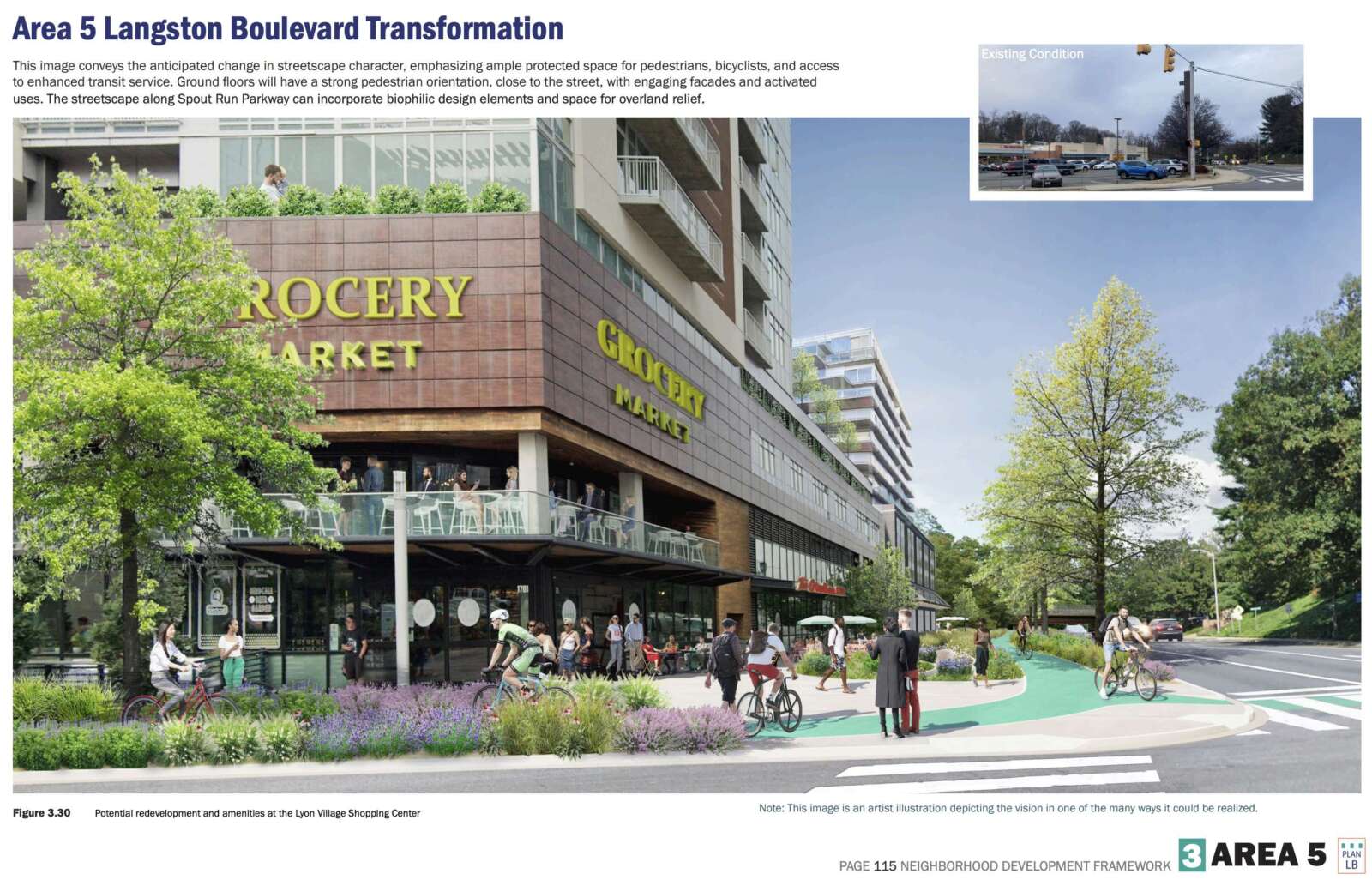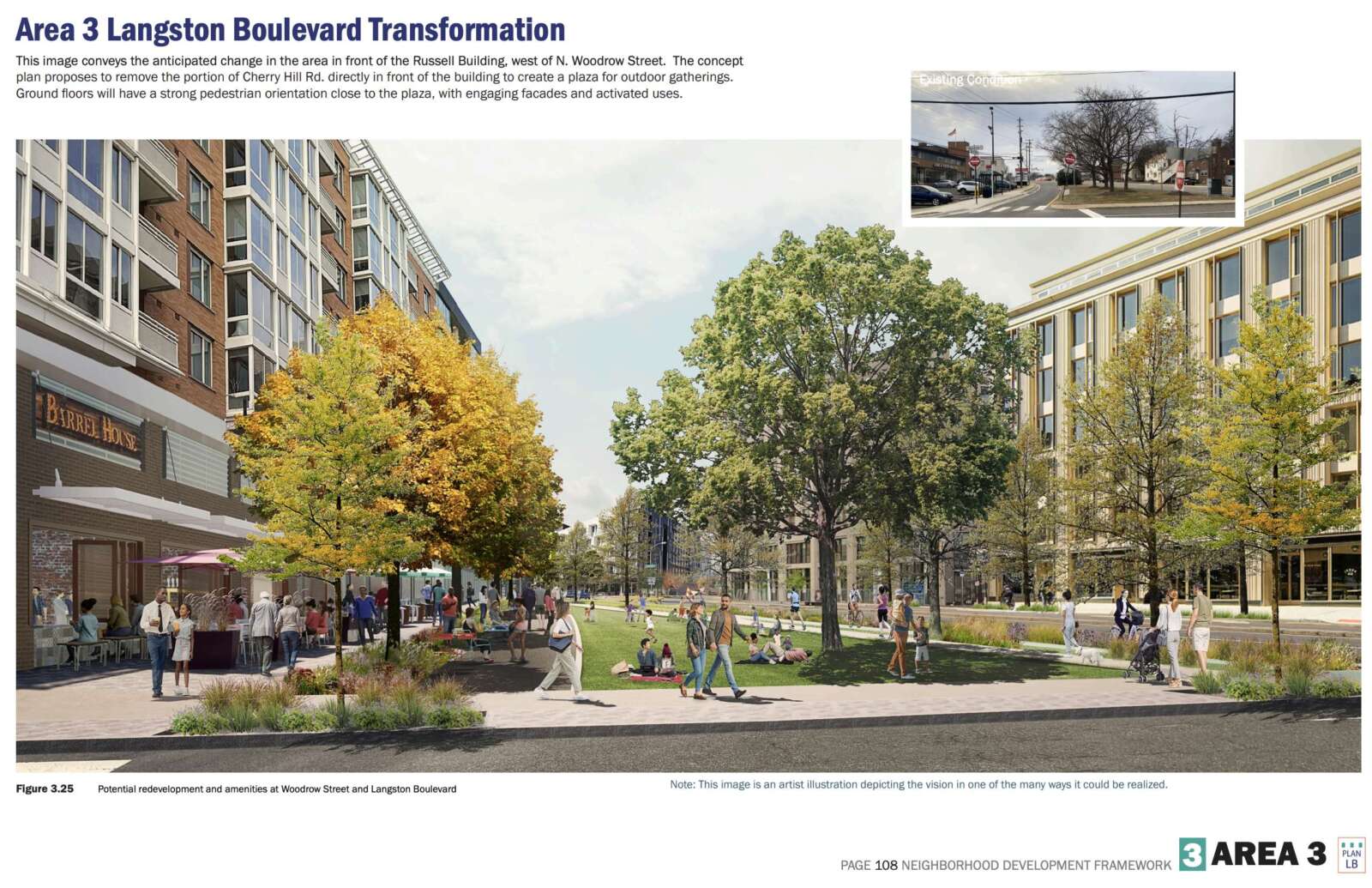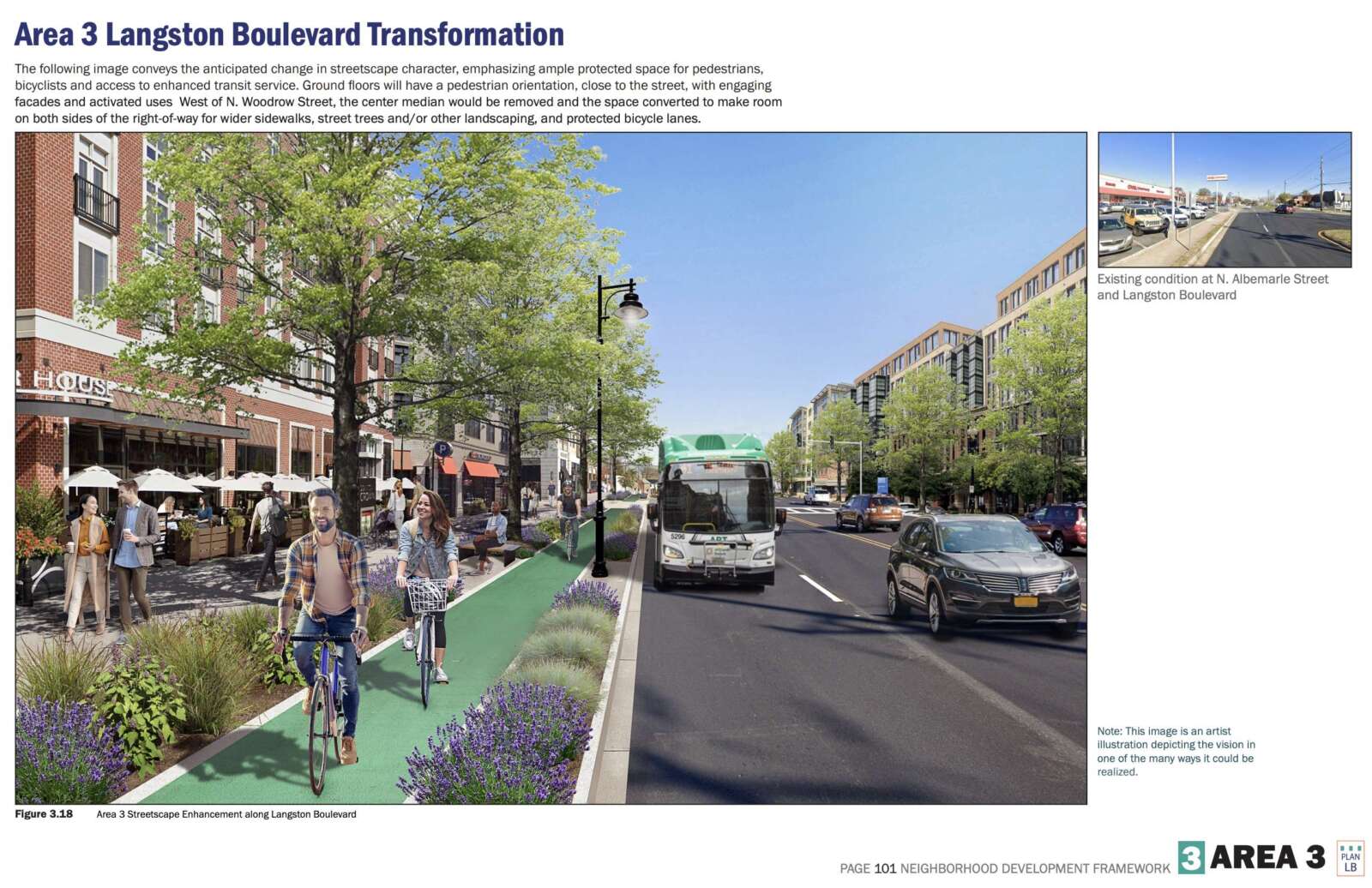(Updated 09/30/22) As Arlington County continues collecting feedback on the preliminary concept plan to turn Langston Blvd into a “Green Main Street” over several decades, a few disagreements have emerged.
Some say county staff need to coordinate more with existing plans for two neighborhoods along Route 29, as well as the Missing Middle Housing Study. Others say the building heights should be taller — to allow for more affordable housing — or are too tall already.
Late in August, Arlington County released a draft plan showing what Langston Blvd, formerly Lee Highway, could look like if the county encouraged denser housing and more walkable, greener streets, and planned for future infrastructure, transportation and facility needs. Since then, the county posted an online feedback form and launched in-person feedback opportunities called Design Studio sessions and virtual neighborhood meetings.
More than 200 people have attended the three virtual community meetings and Design Studio sessions, and more than 200 people have responded to the feedback forms, Rachel LaPiana, a staff member with the Department of Community Planning, Housing and Development, tells ARLnow.
“We encourage the community to provide feedback on a set of specific questions about what is proposed in the PCP and attend one of the upcoming community events,” she said.
There are still a number of opportunities to learn more about Plan Langston Blvd and provide feedback, which staff will collect through early November. This Saturday, the Langston Boulevard Alliance will host a walking tour, during which county planners will be able to answer questions. Another tour will be held on Sunday, Oct. 16.
The Langston Boulevard Alliance is also hosting three Design Studio sessions, held from 12-2 p.m. on Friday, Oct. 7 and 21 and Nov. 4 at its office (4500 Langston Blvd). A fourth virtual community meeting discussing housing, stormwater and transportation will be held Tuesday, Oct. 11, from 7-9 p.m.
It’s too soon to summarize the substance of the feedback that has been collected, LaPiana said.
“Once the engagement period ends, we will compile and analyze all of the community feedback,” she said.
Differing takes have since surfaced during a debate for County Board candidates held by the Arlington Chamber of Commerce, as well as during this month’s County Board meeting.
“I’ve largely heard muted feedback, and that is not always the case with plans,” said County Board member Matt de Ferranti, who’s running for re-election this November, during the debate earlier this month. “I have heard a number of compliments. I actually think the plan is in decent shape.”
But, he said, the plan challenges the county’s ability to advance multiple planning fronts simultaneously, including the controversial Missing Middle Housing initiative, in which the county is considering whether to allow townhouses, duplexes and other low-density housing types in residential areas zoned exclusively for single-family homes.
“We have to, at least in my view, do them separately, because we can give our community full chance for engagement,” he said.
Independent candidate Audrey Clement questioned why upzoning is needed at all, with the bevy of new housing units proposed in Plan Langston Blvd and envisioned in the approved Pentagon City Planning Study, which, like Plan Langston Blvd, calls for significant, mostly residential redevelopment and more designated green spaces.
“We have something called a siloed process, where we have three plans, each ignorant of each other, that will increase housing on a massive schedule. That doesn’t make sense,” Clement said. “These plans should not be developed in a vacuum, but that appears to be what is happening right now.”
East Falls Church homeowner Wells Harrell told the County Board this month that Plan Langston Blvd ought to examine why development has lagged in East Falls Church and Cherrydale, despite the fact both underwent planning efforts in 2011 and 1994, respectively.
“Metro today remains surrounded by parking lots at the East Falls Church Metro station, and so far, there’s only been one — one — residential development since the plan was adopted in 2011,” Harrell said. “We need to take stock of why we haven’t achieved the goals set forth in the Cherrydale and East Falls Church area plans… in order to not just learn from the lessons we had there, but to guide us going forward and make sure we achieve the visions for Langston Blvd.”
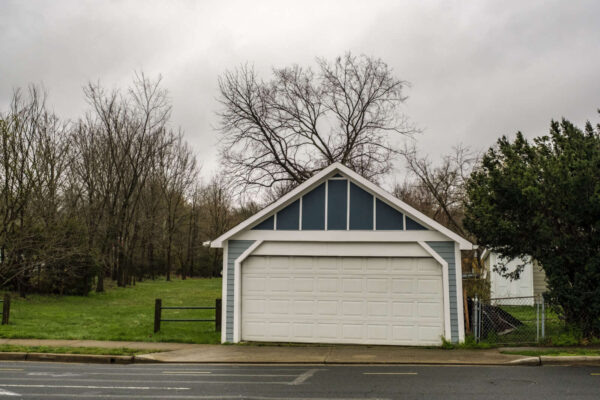
County planners previously told ARLnow that they need the County Board’s go-ahead to revisit the East Falls Church plan. Further discussion about encouraging development in the area could come after the Board adopts a final Plan Langston Blvd document.
For now, plan authors say a final Plan Langston Blvd draft will recommend whether the existing redevelopment roadmaps for East Falls Church and Cherrydale need to be reviewed and refined.
Building heights are another source of disagreement. Plan authors write that building heights were lowered in response to some critical community feedback. That criticism also suggested the changes would diminish the stock of market-rate affordable apartments, lower property values, change neighborhood character and push out small businesses.
County staff say that lower heights may satisfy some residents, but it will slow down redevelopment.
“Staff believes the proposed concept plan will offer incentives for redevelopment, however, the levels are only moderately different from what is allowed for by-right development and site plan projects,” county planner Natasha Alfonso-Ahmed said in a video introducing the plan. “This means that we may see more by-right development, and improvements such as streetscape enhancements may take longer to be realized or happen in a fragmented way.”
And the changes dismayed pro-density advocates, including Harrell and independent County Board candidate Adam Theo.
“I am disappointed to see that the most recent draft has scaled a lot of that back,” Theo said.
De Ferranti, meanwhile, says there is one neighborhood where the heights may still be “a touch too high” — the area near Spout Run Parkway, where plan calls for buildings 12-15 stories tall.
“That decision is one we have to engage as a community on,” he said.


